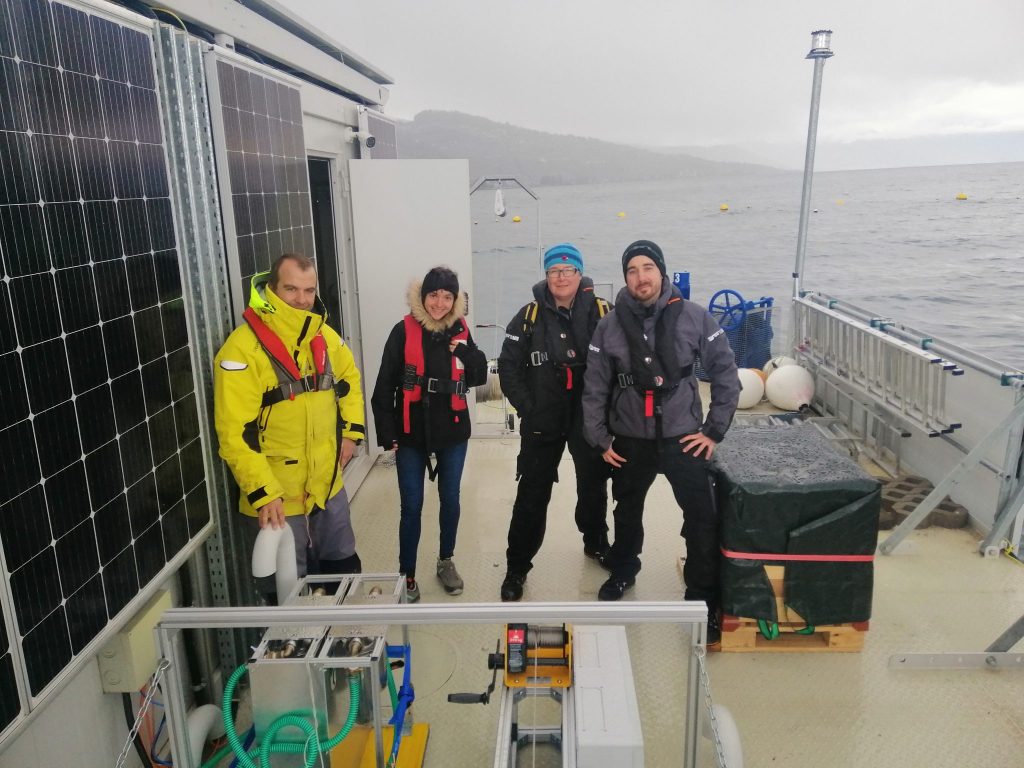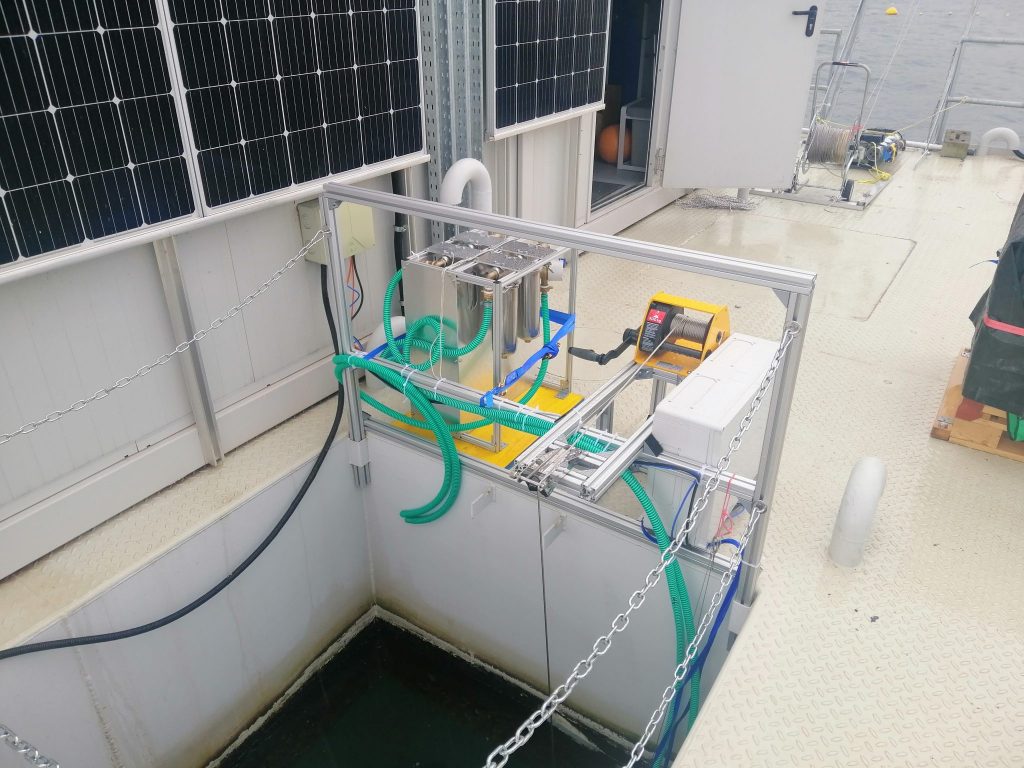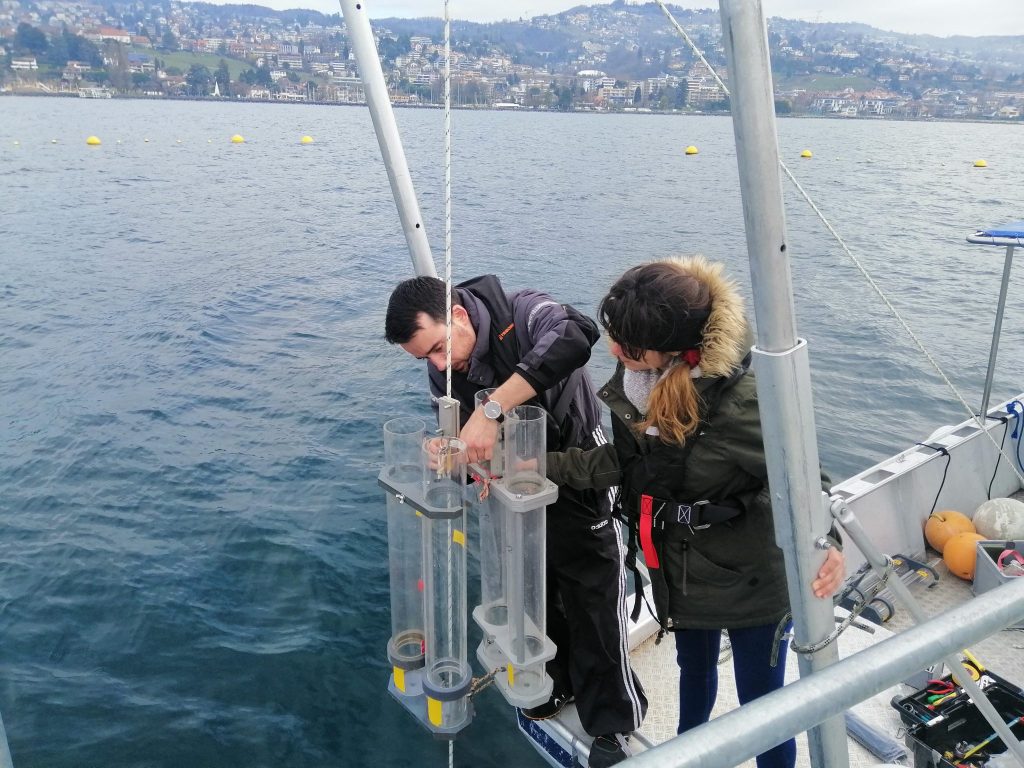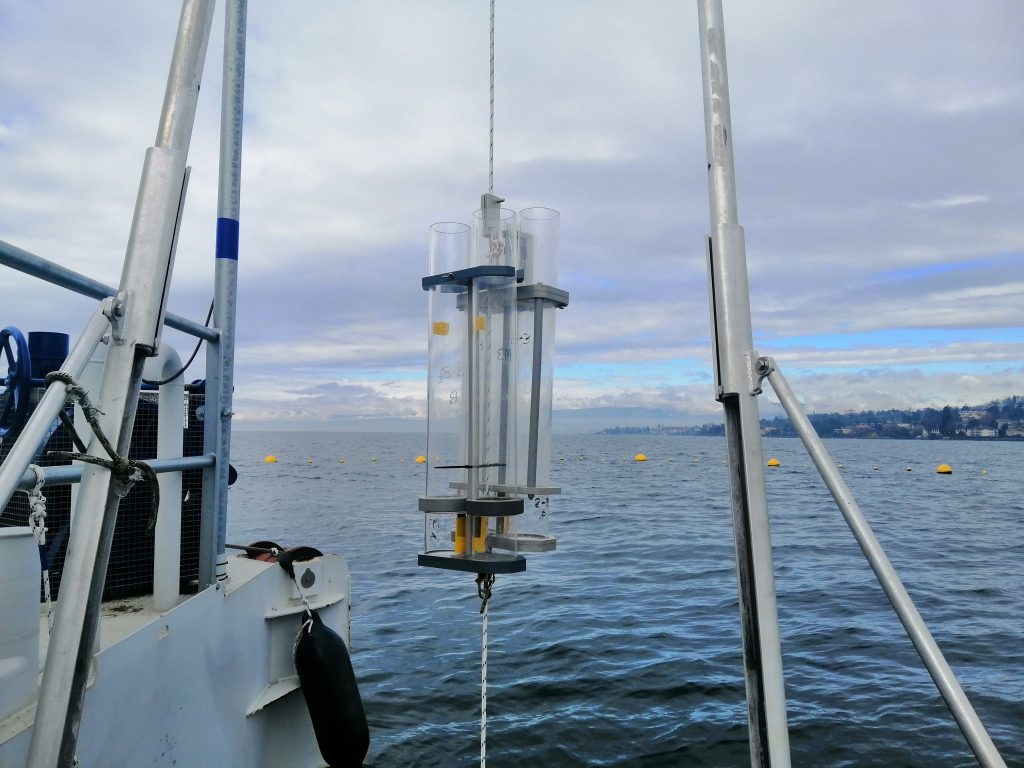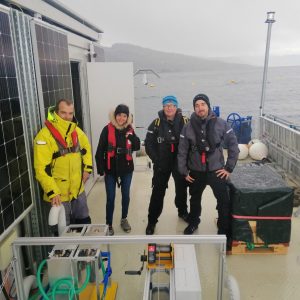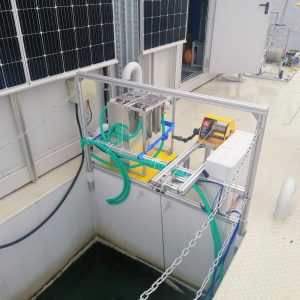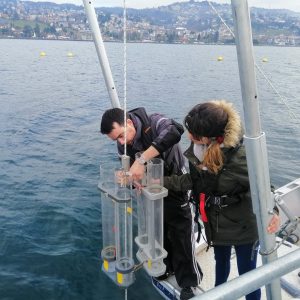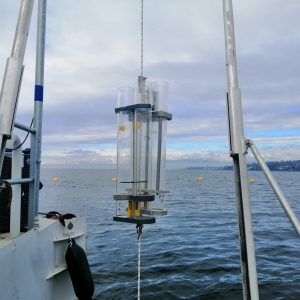This project is supported by the LeXPLORE platform (EPFL/UNIL/UNIGE/Eawag/INRA)
The aims of the MicroSed project are (I) to determine how microplastics are distributed in the water column and interact with particulate matter, (II) to study how microplastic concentration change over time (i.e. seasonal and annual variations) (III) and to assess the past evolution of the microplasitc pollution in Lake Geneva since the early 1900s. The LéXPLORE platform constitutes a great opportunity to achieve these goals. As this platform is installed on the lake for several years and scientific instruments can be deployed over long periods, this research infrastructure will enable to follow the evolution of microplastic concentration through space and time. To study the distribution of microplastics in the water column large volume of water (i.e. ~1 m3 day-1) will be filtered daily in the surface layer (~2 m) and below the thermocline (~31 m) during 2 years using an automated filtration system equipped with stainless steel filters of 150 μm and 500 μm. The microplastics captured in the filters will be digested, extracted, counted and characterized every 2 months using epi-fluorescence microscopy and infrared spectroscopy. In addition, microplastics present in particulate matter collected at 15 m, 30 m, 50 m and 100 m using sediment traps will be also analysed every 2 months to study how particulate matter contributes to the sedimentation of plastic debris. The results of these samplings will be compared to the data of the Idronaut sonde, the Thetis vertical profiler, and acoustic Doppler current profilers to assess the influence of currents and water stratification on microplastic concentration and their vertical distribution in the water column.
